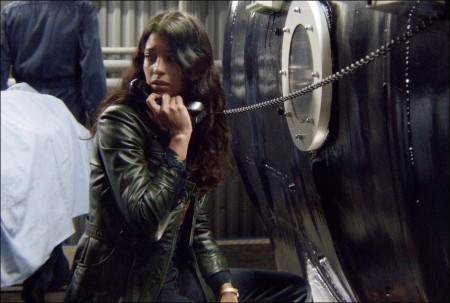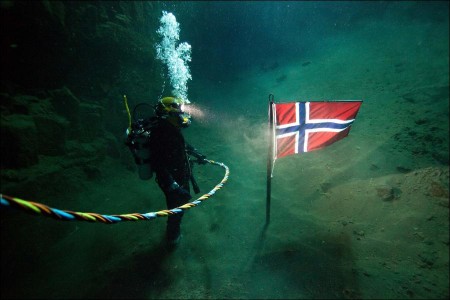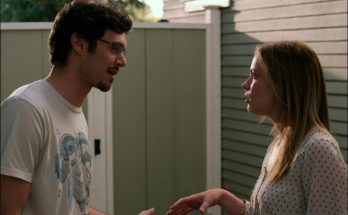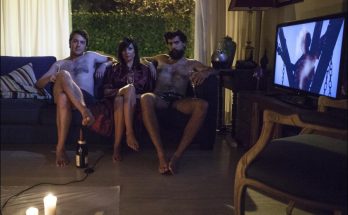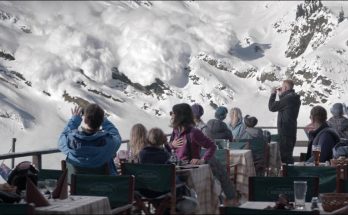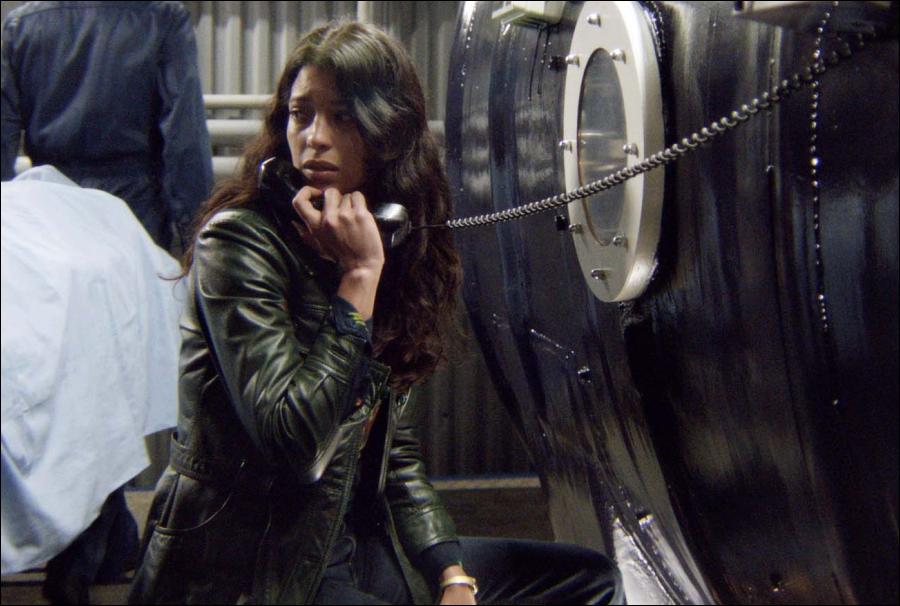Pioneer is set in the early 80’s, at the beginning of the Norwegian Oil Boom. Enormous oil and gas deposits are discovered in the North Sea, authorities aim to bring the oil ashore through a pipeline 500 meters deep. Petter, a professional diver, is obsessed with reaching the bottom of the Norwegian Sea.
Along with his brother Knut, he has the discipline, strength and courage to take on the world’s most dangerous mission. But a sudden, tragic accident changes everything. Petter is sent on a perilous journey where he loses sight of who is pulling the strings. Gradually, he realizes that he is in way over his head and that his life is at stake.
Director’s Statement
Pioneer is a portrait of a Norwegian deep-sea diver in the early 1980’s, set within the thriller genre. I’m drawn to stories told through the protagonist’s point of view. In “Pioneer” I looked to create a character that is searching for a truth, which threatens his ability to comprehend reality. Thus the distinction between paranoia and conspiracy is at times blurred. True to the genre, the film has a protagonist and a number of potential antagonists.
In terms of genre, we aimed to reinterpret the American 70’s thriller. Growing up in the 70’s, I was heavily influenced by films such as “The Conversation”, “Chinatown” and “All The President’s Men.” These films inspired not only my aesthetic approach to filmmaking, but also my interest in genre films. I believe genre films can be used successfully to explore character dilemmas for a wider audience. I wanted to reinvigorate the approach I used in my first film INSOMNIA, by directing a character driven thriller.
To me, much of filmmaking is about giving an audience the physical experience of going somewhere different. In “Pioneer” we wanted to convey the physical and emotional impression of what it’s like to work at the bottom of The North Sea. Inspired by research, we aimed to contrast the claustrophobia of the diving bell and helmet diving with the enormity of the clear, dark sea. I took great inspiration from the way sci-fi movies deal with infinity and scale. We also aimed to make the sea blacker than the traditional notion of blue sea.
As PIONEER is inspired by real events, the film also has an historic aspect. I grew up in a country that had discovered enormous oil and gas resources that we didn’t know how to utilize. Experiencing the change in our national mentality through the period of blooming wealth served above all else as my inspiration to direct PIONEER. To me, it’s ultimately a story about the ways sudden wealth changes you.
Q & A WITH Director Erik Skjoldbjærg
How did the project land on your desk?
Erik Skjolbjærg: The producer, Christian Fredrik Martin, came to me several years ago. He had heard of the idea of North Sea divers from two Norwegian film graduates, Kathrine Valen and Cathinka Nicolaysen. The angle that appealed the most to me was to depict the pivotal moment in our history when we had discovered oil but didn’t know if we could secure the resources. I grew up in the seventies and I remember that those were totally different times. I was interested in showing how we managed to secure those resources to become a rich nation. Another key element is that my first film, “Insomnia,” was a thriller told from the main character’s point of view and I wanted to explore this type of thriller again.
You share the writing credits with no less than four people, including the Swede Hans Gunnarsson (Arn) and Norwegian Nikolaj Frobenius (co-writer of Insomnia). What were the major challenges in the writing process?
ES: I started working with Kathrine and Cathinka. We did a lot of research. It was like a filtering process. We soon decided we would take all researched material and mold it into a thriller. The challenge was huge. After working on a few drafts we turned to Hans Gunnarsson who has lots of experience working on different genres. He helped develop the lead character of Petter (played by Aksel Hennie.)
Then I collaborated with Nikolaj Frobenius who helped build the plot into the thriller genre. The research was complex because the pioneering oil period is something that not everyone wants to be associated with. There is an ongoing conflict between some of the divers and the government, who are supposedly responsible for some sort of neurological traumas that the divers suffered after the experiments. So the subject is still controversial in Norway. The case is currently under review at the European Court of Human Rights in Strasbourg.
We spoke with the divers and researched various events and accidents that took place. We used all of this as a template for our film and condensed it into a simple story for the audience to follow. But a lot of elements are based on reality.
There are two aspects to the story: a heroic aspect with divers wanting to push their limits, and a darker side of human exploitation and sacrifice linked to the financial ambitions at stake…
ES: Yes we decided to show today’s audience what it must have felt at the time. The divers then had a mentality similar to people doing extreme sports today. They were adrenaline junkies who wanted to push their limits. At the same time, we tell the story from the point of view of a diver who discovers the power struggle between the Norwegian government and the international oil community about who is to control the oil.
In terms of casting, was Aksel Hennie in your mind when you wrote the script ?
ES: Yes he was. Aksel was very involved from the very start. Besides the fact that he is a very emotional actor, he has a screen presence and understands the process of filmmaking. He was a fantastic collaborator throughout the film.
Was it difficult to nail down the three US actors?
ES: It’s hard for Scandinavian films to attract US actors in supporting roles. The only way to do it is if you wait until just before the shoot. Wes Bentley came in four weeks before shooting, Stephen Lang two weeks before and Jonathan LaPaglia one week before. It was truly nerve wrecking.
Claustrophobia and paranoia are portrayed in most of your works and in this film again. How did you work with your production designer and cinematographer to create those feelings?
ES: Basically the film shows that in the seventies, there was a lack of concern for security, unlike nowadays. All technical equipment of the time is no longer in use. We had difficulty finding sets such as gas chambers and diving ships, so we ended up building it all. Our gifted production designer Karl Júlíusson has done major sets for Kathryn Bigelow so he had the experience and the authority to deal with this challenge on a Scandinavian budget. Similarly the costume designer Anne Pedersen did a great job.
Then, as the film is a co-production, I was working with an international crew and ended up taking on Swedish cinematographer Jallo Faber. It was one of the best creative choices I ever made because I really think that our idea to recapture the seventies feel in Scandinavia was the right one. We also did research on industrial diving. We decided to create claustrophobic spaces and infinite spaces because that’s the reality for North Sea divers. We looked at top shots and angles from above because the film is about people at the bottom of the sea and at the bottom of the hierarchy. We were also inspired by sci-fi movies that deal with infinity and scale in an interesting way.
In terms of location shoots, I think you went to Iceland to shoot some underwater scenes?
ES: We had the Finnish underwater team from Matila Röhr MRP Productions. They said the clearest water you can get with sand at the bottom is in a lake in Iceland where you have water from a glacier being filtered by lava sand that comes into this underwater trench. It’s incredibly clear and perfect for underwater filming. We shot other underwater scenes in Germany.
The film opens in Norway and has been selected for Toronto. Are you anxious to see how the international audience will react to this Norwegian tale of underwater heroes and conspiracy thriller?
ES: Above all, the film takes people where they have never been before, on an epic adventure. We’ll see how people will react in Toronto, but signs are that there is an audience as the film has been pre-sold to several territories including the US and Japan.
What’s next for you? Any interest to go back to Hollywood where you have a name as the creator of Insomnia that was eventually remade by Christopher Nolan?
ES: I have several projects. Among those is a script that I’m developing with Bjørn Olaf Johannessen, who wrote Everything Will Be Fine for Wim Wenders. Our project is based on Gaute Heivoll’s novel ‘Before I Burn’, itself inspired by the true story of a pyromaniac who started dozens of fires in Southern Norway in the summer of 1978.
As for Hollywood, I’ve been there. If the proper project comes along and I can work freely on it, then I will consider it. I’m always open to explore new things. We’ll see in Toronto!
Written by Annika Pham
Pioneer
Directed by: Erik Skjoldbjærg
Starring: Wes Bentley, Stephen Lang, Aksel Hennie, Stephanie Sigman, Jonathan LaPaglia, Ane Dahl Torp
Screenplay by: Nikolaj Frobenius, Hans Gunnarsson
Production Design by: Karl Júlíusson
Cinematography by: Jallo Faber
Film Editing by: Jonas Aarø, Frida Eggum Michaelsen
Costume Design by: Anne Pedersen
Set Decoration by: Louise Drake
MPAA Rating: R for language.
Studio: Magnolia Pictures
Release Date: December 5, 2014
Visits: 87
